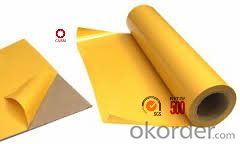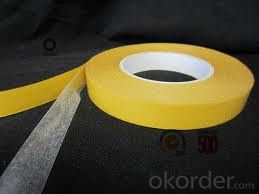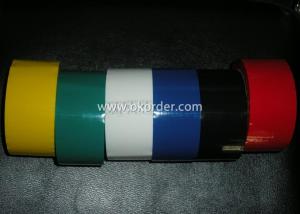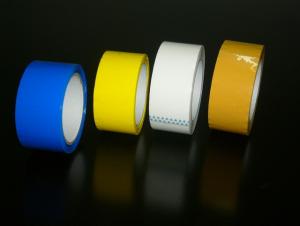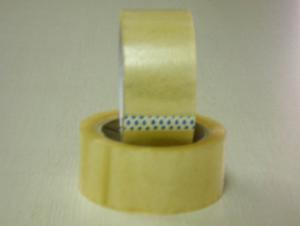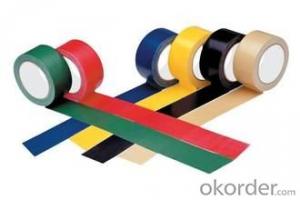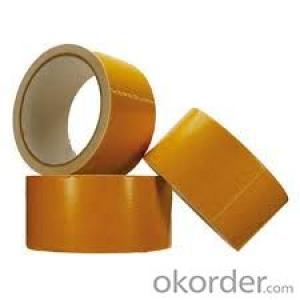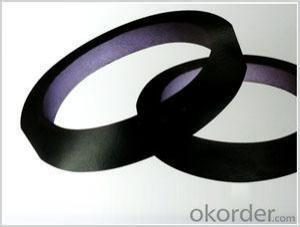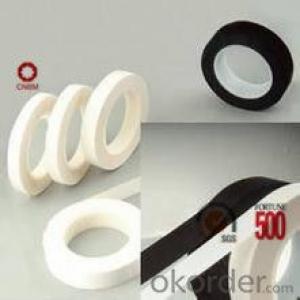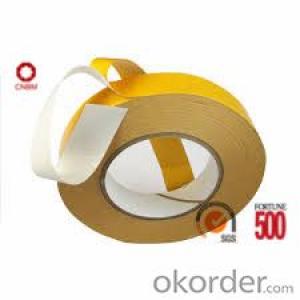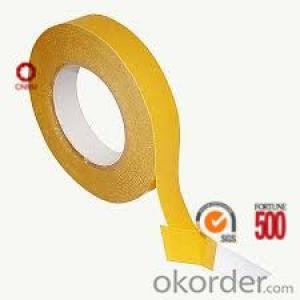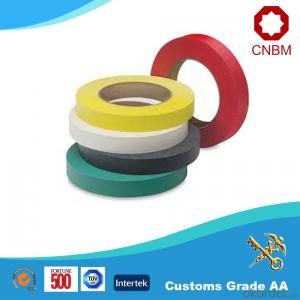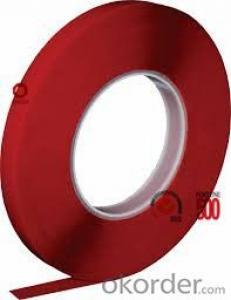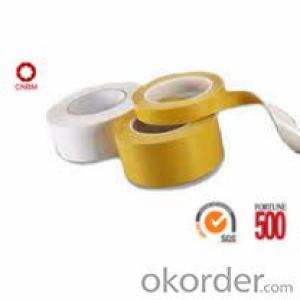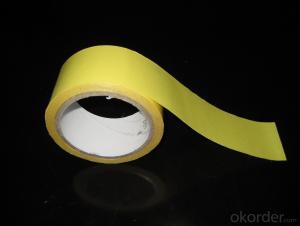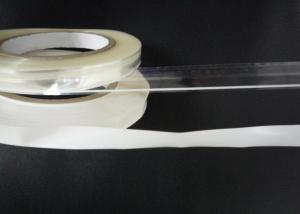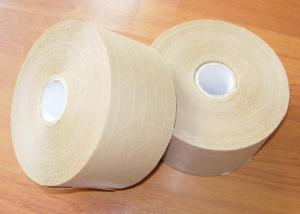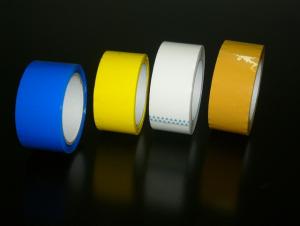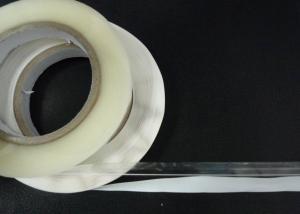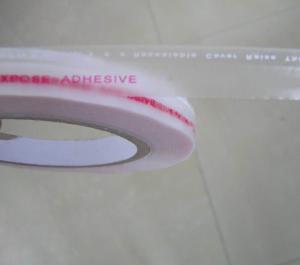Commercial Packaging Tape - Double Sided Tissue Tape with Solvent Based Adhesive, Yellow Color
- Loading Port:
- Shanghai
- Payment Terms:
- TT OR LC
- Min Order Qty:
- 10000 m²
- Supply Capability:
- 20000000 m²/month
OKorder Service Pledge
OKorder Financial Service
You Might Also Like
Specifications
·World Top 500 Enterprises
·Resistance to cold, heat and aging
·Best quality and competitive price
·SGS&ISO9001
Description
The Double Sided Tissue Tape is of tissue as the carrier, coating with hot melt adhesive, water based acrylic, solvent based acrylic. It is excellent in flame retardant, high temperature stability, and anti-aging. It provides well insulation to various products.
The thickness of the tape can be customized.
General purpose of Double Sided Tissue Tape: widely used for bonding, fixing for leather, foam, sponge, garment, shoe, luggage, plastic, paper splicing and stationery.
Typical Physical Reports of Double Sided Tissue Tape
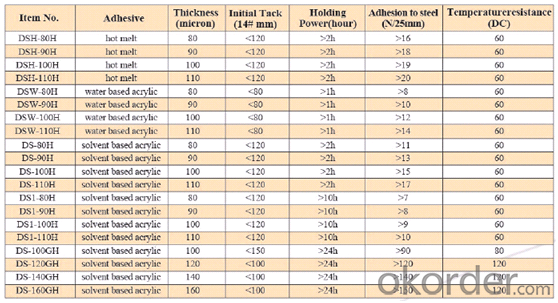
Packaging Detail
The thickness of the tape can be customized.
Cut Roll: As per customer’s requirements
Log Roll: Length 1000mm; width: 1050mm, 1260mm, 1040mm..

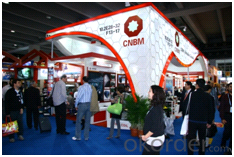
FAQ of Double Sided Tissue Tape
Q1. How about your company?
CNBM International Corporation (CNBM International) is a state-owned company and we have sound business relations with clients from over 120 countries. Currently, we have wholly-owned overseas subsidiaries and branches in 5 countries with a view to realize localization, which also represents an essential progress in our globalization target. We have over twenty years experiences.
Q2. What kind of service we can provide for you?
Sample of Double Sided Tissue Tape is available.
Your inquiry will be replied within 12 hours.
24 hours service for you
Well-trained & experienced sales representative are ready to answer you.
Q3. How long can you receive the product?
Within 7-15 working days after receiving your deposit
Welcome to contact us and visit the factory!
- Q: Can packaging tape be used for sealing protective packaging materials like bubble wrap?
- Yes, packaging tape can be used for sealing protective packaging materials like bubble wrap. It provides a secure and effective way to seal the packaging, ensuring that the contents remain protected during transportation or storage.
- Q: Can packaging tape be used for sealing metal boxes?
- Yes, packaging tape can be used for sealing metal boxes. Packaging tape is designed to provide a secure and durable seal on various surfaces, including metal. It offers a strong adhesive that can effectively stick to metal surfaces, ensuring that the box remains sealed during transportation or storage. However, it is important to choose a packaging tape that is suitable for heavy-duty applications and can withstand the weight and pressure that may be exerted on the metal box. Additionally, it is recommended to clean the metal surface before applying the tape to ensure proper adhesion.
- Q: Does packaging tape come in different eco-friendly options?
- Different options are available for eco-friendly packaging tape. Manufacturers have introduced alternatives in response to the growing awareness of the environmental impact caused by traditional packaging materials. These alternatives include packaging tapes made from recycled materials or materials that can biodegrade. Recycled packaging tapes are often made using post-consumer waste, thereby reducing the consumption of new resources. Biodegradable packaging tapes are designed to naturally decompose over time, minimizing their impact on the environment. Furthermore, some packaging tapes utilize water-based adhesives instead of solvent-based ones, thereby further reducing their ecological footprint. These eco-friendly options allow businesses and individuals to select packaging tapes that align with their sustainability goals, while still ensuring secure packaging and shipping.
- Q: What are the benefits of using double-sided packaging tape?
- Using double-sided packaging tape has several advantages. Firstly, it ensures a strong and secure bond between surfaces, making it perfect for packaging applications where contents need to stay in place during transit or storage. The tape creates a powerful adhesive bond, reducing the risk of items shifting or becoming damaged. Secondly, double-sided packaging tape is versatile and can be used for various purposes. It can seal boxes, attach labels or documents, and even mount lightweight objects. This versatility makes it valuable for personal and professional packaging needs. Additionally, double-sided packaging tape is easy to use. Unlike traditional tapes that require adhesive to be applied on both surfaces, double-sided tape already has adhesive on both sides, making it a convenient option. Simply peel off the backing and apply the tape to the desired surface, saving time and effort. Moreover, double-sided packaging tape provides a neat and clean appearance. As it is hidden between bonded surfaces, it creates a seamless look without any visible tape lines. This is especially useful when packaging gifts or products that require a professional and presentable appearance. Lastly, double-sided packaging tape is designed to be durable and long-lasting. It can withstand various environmental conditions, such as temperature changes, humidity, and exposure to moisture, without losing its adhesive properties. This ensures that your packaging remains intact and secure for an extended period of time. In conclusion, the benefits of using double-sided packaging tape include strong adhesion, versatility, ease of use, a clean appearance, and durability. Whether you are packaging items for personal or professional purposes, double-sided packaging tape provides a reliable and efficient solution.
- Q: Can packaging tape be used for sealing ceramic items?
- Yes, packaging tape can be used for sealing ceramic items. It can provide a temporary seal and hold the pieces together, but it may not be as effective or long-lasting as specialized ceramic adhesives or sealants.
- Q: Can packaging tape be used for sealing office supplies or stationery?
- Yes, packaging tape can be used for sealing office supplies or stationery. It provides a strong and secure seal to keep items protected and organized.
- Q: What are the alternatives to packaging tape for sealing packages?
- Sealing packages can be done using various alternatives to packaging tape. Here are a few choices available: 1. Gummed tape: Also known as water-activated tape, gummed tape is a well-liked substitute. It is created from paper or reinforced material and necessitates the use of water to activate the adhesive. Gummed tape forms a sturdy bond with the package and ensures a seal that is evident if tampered with. 2. Strapping: Strapping is commonly employed for securing heavy or bulky packages. It involves the use of plastic or metal straps to tightly hold the package together. Strapping can offer more security than tape, particularly for larger or irregularly shaped items. 3. Shrink wrap: Shrink wrap is a plastic film that can be wrapped around the package and sealed by applying heat. As the film shrinks, it conforms tightly to the shape of the package, ensuring a secure seal. Shrink wrap is frequently used for wrapping pallets or bundling multiple items together. 4. Adhesive labels: An alternative to tape for sealing packages is adhesive labels. These labels possess a strong adhesive backing that adheres to the package, guaranteeing a secure seal. They are particularly useful for small or lightweight items. 5. Twine or string: For lighter packages, twine or string can be used to secure the contents. Simply wrap the string around the package multiple times and tie it securely. Although this method may not be as strong as tape, it can be a cost-effective and environmentally friendly option. Ultimately, the selection of an alternative to packaging tape depends on the package's size, weight, and characteristics. Each option carries its own advantages and disadvantages, so it is important to consider the specific shipment requirements before making a decision.
- Q: What are the different types of packaging tape available?
- There are several different types of packaging tape available, including transparent tape, brown or tan tape, reinforced tape, water-activated tape, and duct tape. Each type of tape has its own unique properties and is designed for specific packaging needs and applications.
- Q: What are the benefits of using reinforced packaging tape?
- There are several benefits of using reinforced packaging tape. Firstly, reinforced packaging tape is designed to provide extra strength and durability compared to regular packaging tape. It is made with a layer of strong fiberglass or nylon threads embedded within the tape, which enhances its resistance to tearing and breaking. This added strength makes it ideal for securing heavy or bulky packages, ensuring that they remain intact during transportation or storage. Secondly, reinforced packaging tape provides an extra layer of security for your shipments. The reinforced fibers within the tape make it more difficult to tamper with or remove without detection. This can help protect your packages from theft or unauthorized access, giving you peace of mind that your goods will reach their destination safely and intact. Furthermore, reinforced packaging tape is also highly adhesive. It sticks firmly to a variety of surfaces, including cardboard, plastic, and other common packaging materials. This strong adhesion ensures that the tape stays in place and does not peel off easily, even in challenging conditions such as extreme temperatures or rough handling during shipping. Additionally, reinforced packaging tape is often water-resistant or even waterproof. This feature is particularly important in situations where packages may be exposed to moisture or unfavorable weather conditions. The water-resistant properties of this tape help to protect the contents of your packages from potential damage caused by water or humidity. Lastly, using reinforced packaging tape can help you save money and reduce waste. Its high strength and durability mean that you can use less tape to secure your packages, resulting in fewer tape rolls being used and less waste generated. This can lead to cost savings over time and contribute to a more sustainable packaging process. In summary, the benefits of using reinforced packaging tape include enhanced strength, improved security, strong adhesion, water resistance, and cost savings. By investing in high-quality reinforced tape, you can ensure that your packages are well-protected during transit, giving you and your customers peace of mind.
- Q: Is packaging tape safe to use on painted surfaces?
- Packaging tape is generally safe to use on painted surfaces, but there are a few factors to consider. Firstly, it is important to ensure that the paint is fully cured before applying any tape. This typically takes around 30 days, depending on the type of paint used. Applying tape to fresh or uncured paint can cause damage when the tape is removed. Secondly, the type of tape used can also make a difference. Most packaging tapes are designed to be easily removable without leaving residue or causing damage to surfaces. However, some low-quality tapes or tapes with strong adhesives may leave behind sticky residue or even peel off the paint when removed. It is recommended to use high-quality packaging tape that is specifically labeled as safe for painted surfaces. To be on the safe side, it is always a good idea to test the tape on a small, inconspicuous area of the painted surface before applying it extensively. This will help you ensure that the tape does not cause any damage or leave residue behind. If there are any concerns, it is advisable to consult the manufacturer's instructions or seek professional advice. Overall, when used properly and on fully cured paint, packaging tape should be safe to use on painted surfaces. However, it is important to exercise caution and choose the right tape to prevent any potential damage.
Send your message to us
Commercial Packaging Tape - Double Sided Tissue Tape with Solvent Based Adhesive, Yellow Color
- Loading Port:
- Shanghai
- Payment Terms:
- TT OR LC
- Min Order Qty:
- 10000 m²
- Supply Capability:
- 20000000 m²/month
OKorder Service Pledge
OKorder Financial Service
Similar products
Hot products
Hot Searches
Related keywords






